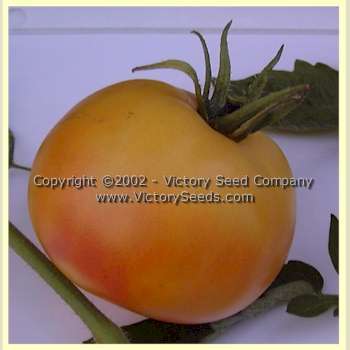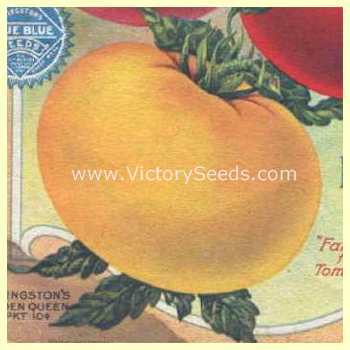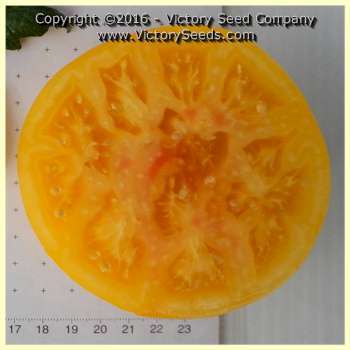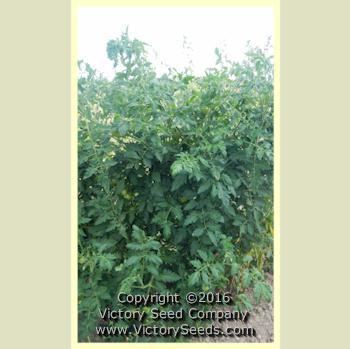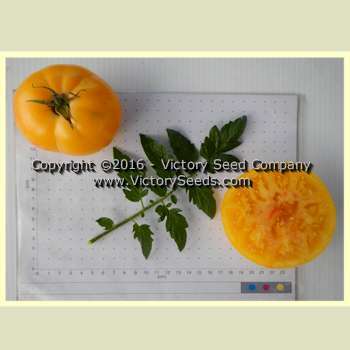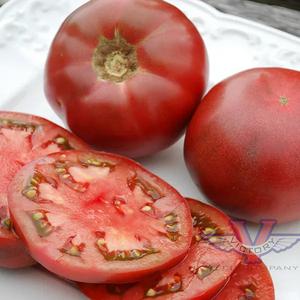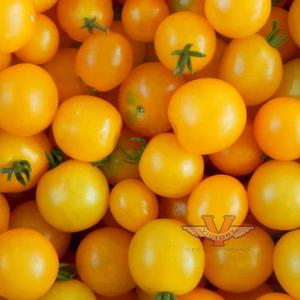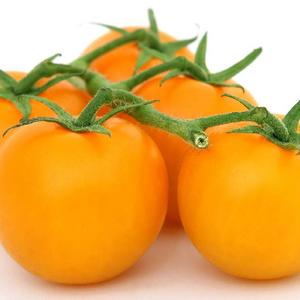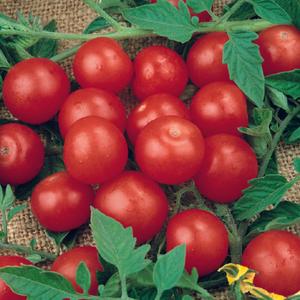





Livingston's Golden Queen Tomato
Solanum lycopersicum
Price: $2.95
SKU: 340077178 days, indeterminate — Characteristically described as the "Queen of all the Yellows," "Of superior flavor ...," "... it is solid, always smooth, entirely free from ridges."[2,3] The fruit are early, a good size, beautiful and excellent for slicing.
Introduced by Alexander W. Livingston in 1882, the standard catalog description over the years have been fairly consistent. In their 1893 seed catalog, they describe it as follows:
"A real good yellow sort of first-class quality, and its superior flavor has brought it into general favor as a table fruit. It is solid, smooth, entirely free from ridges, large in size, ripens up early, and is a very handsome sort; in fact, by far the most beautiful yellow variety ever sent out: the larger and riper fruit are frequently tinged with red at the blossom end. None excel it for eating raw or slicing. The handsome golden-yellow slices make a beautiful contrast in a dish with red sorts. It has very little acid and the quality is excellent. Makes beautiful preserves."[1]
Also from 1893, while reminiscing about the origin and history of the 'Golden Queen' tomato in his book entitled "Livingston and the Tomato," Mr. Livingston wrote:"In one of the county fairs which I often attended for the purpose of selling seeds, I saw a very pretty yellow tomato. As I was examining it closely, and admiring it, the owner saw fit to make a present of one of them, which I highly prized, and took special care to preserve, test and improve. I had it a number of years before I released it; but in 1882 I thought it advisable to give it a wider circulation, and so advertised it extensively under the above name."[4]
Several companies have sold yellow fruited tomatoes over the years calling them "Golden Queen." However, they are not true to Livingston's. Our seed was grown out from stock obtained from the National Seed Storage Lab accession number NSL 27357 by Craig LeHoullier and is true to the original documentation. Each packet contains approximately 20 seeds.
Fruit Color: Orange
Fruit Color: Yellow
Special Groups: Livingston Tomatoes
Special Groups: Ark of Taste
Special Groups: "Epic" Tomatoes
Harvest Timing: Main Crop / Mid-Season
Fruit Color: Yellow
Special Groups: Livingston Tomatoes
Special Groups: Ark of Taste
Special Groups: "Epic" Tomatoes
Harvest Timing: Main Crop / Mid-Season
Informational Resources:
- "Seed Annual for 1893," Livingston Seed Company, Columbus, Ohio, 1893.
- "Seed Annual for 1918," Livingston Seed Company, Columbus, Ohio, 1918.
- "Seed Annual for 1933," Livingston Seed Company, Columbus, Ohio, 1933.
- "Livingston and the Tomato: Being the History of Experiences in Discovering the Choice Varieties Introduced by Him with Practical Instructions for Growing," A. W. Livingston, 1893.
- "100 Heirloom Tomatoes for the American Garden," Dr. Carolyn Male, Workman Publishing, 1999, pages 118-119.
- "Epic Tomatoes: How To Select and Grow the Best Varieties of All Time," Craig LeHoullier, Storey Publishing, 2015, page 11, 28, 36, 109, 213, 222, 223.
Customer Reviews:
Do you have experience with this one? 📝 📣 Write a review!
★★★★★ Good Tomatoes! Livingston's Golden Queen Tomato
By Rhonda (Wyoming) on September 6, 2024
By Rhonda (Wyoming) on September 6, 2024
Livingston's Golden Queen Tomato. These were great seeds that plants is big and beautiful. I love these tomatoes, that flavor is amazing!
★★★★★ A wonderful tomato. Sweet and not acidy.
By Dawn Wing on February 5, 2017
By Dawn Wing on February 5, 2017
I grew this tomato in the summer of 2016. It is a wonderful tomato. Sweet and not acidy. It's wonderful just sliced as veggie side with summer hamburgers and lovely in garden salads. I start my plants in mid-February, so that they're a large size when I plant them in late May. It beats the 'tomato blight' that will occur toward mid August.
